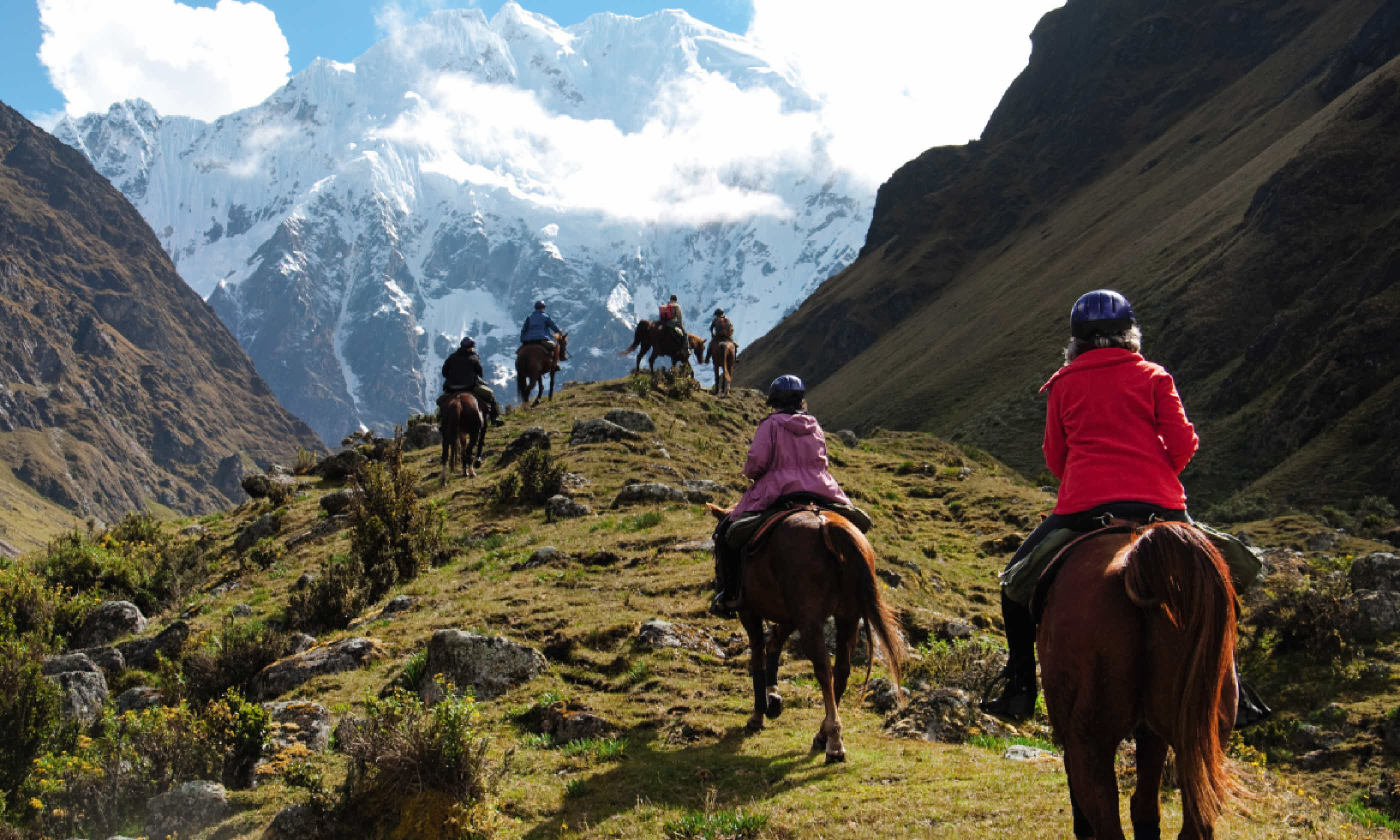
Horse riding on the Salkantay Trek, Peru
15 ecosystems, 4,600m high trails – on four hoofs. Trot to the top of the alternative Inca Trail for a view of Machu Picchu that the crowds don't see
‘Keep to the mountainside!” shouted Guido. I soon saw why. A landslide had taken away some of the dirt trail. To my right was a drop of hundreds of metres. I didn’t dare look down; praying we wouldn’t meet a mule-train coming in the opposite direction, I focused on the view through Guapa’s pricked ears instead. She didn’t hesitate but calmly walked on.
Day four of the Salkantay Trek by horseback, and I had expected the going to be easy. It was the previous day that should have been the big one, crossing a notorious 4,600m pass. I was obviously going to have a few more heart-stopping moments before I got to relax with a pisco sour at the comfortable lodge that awaited.
All the pretty horses
The Salkantay Trek has become known as the ‘alternative Inca Trail’. Higher and longer, it lacks the Inca ruins that the ‘Classic’ trail is known for, but it has jaw-dropping scenery, crosses 15 ecosystems and isn’t as busy, especially out of high season. One enterprising company, Mountain Lodges of Peru, has built four exclusive lodges along the route for its clients, and offers a monthly opportunity to tackle the trail by horseback.
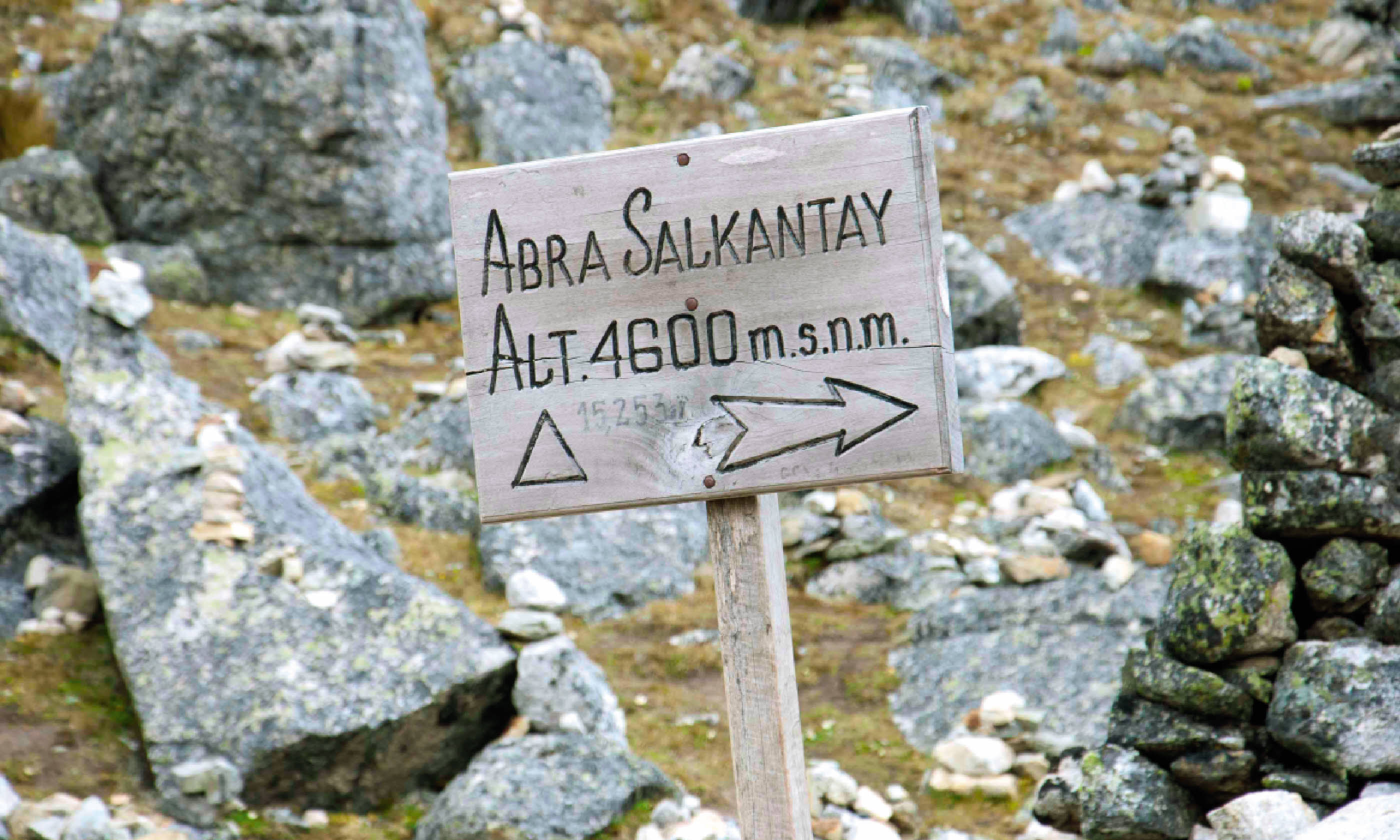
We were a mixed group of Brits, Brazilians and Americans. The two Brazilians “could ride before they could walk”; at the other extreme, one American lady had been riding less than a year, having learned the basics on YouTube. We would be guided by Guido, and accompanied by horseman Ricardo, a couple of assistants and a doctor.
We met the horses just outside the village of Mollepata, the starting point for the trail. They were a handsome bunch, quarter horses from Uruguay, but a couple of them were looking decidedly lively. “I want a gentle one,” I quickly stated. I was allocated a calm chestnut mare called Guapa – meaning ‘pretty one’.
We stuffed the capacious saddlebags with rain ponchos, sun-block and our cameras. They were tied on, and we mounted onto comfy Uruguayan saddles and set off up a switchback dirt road, the horses keen to be off.
The Apurímac River was gushing on our right, and we spotted the occasional waterfall across the river valley. Lupins and other colourful flowers bordered the road, and a raucous flock of parrots chattered. For most of the ride we had brilliant sunshine, though one downpour provided a comedy moment as we attempted to clamber into our rain ponchos while on horseback.
We carried on alongside an ancient Inca aqueduct that still carries water to the communities further down. The rain eased as we approached Salkantay Lodge, set on a large grassy plateau known as Soraypampa. Dominating the scene were the hulking shapes of two mountains: Salkantay and Humantay.
Sitting directly due south of Machu Picchu, Salkantay was the second most sacred mountain in the Inca world. Mountains offered the Incas a connection with their gods; they each had their own powerful spirit, and offerings and sacrifices were made to them.
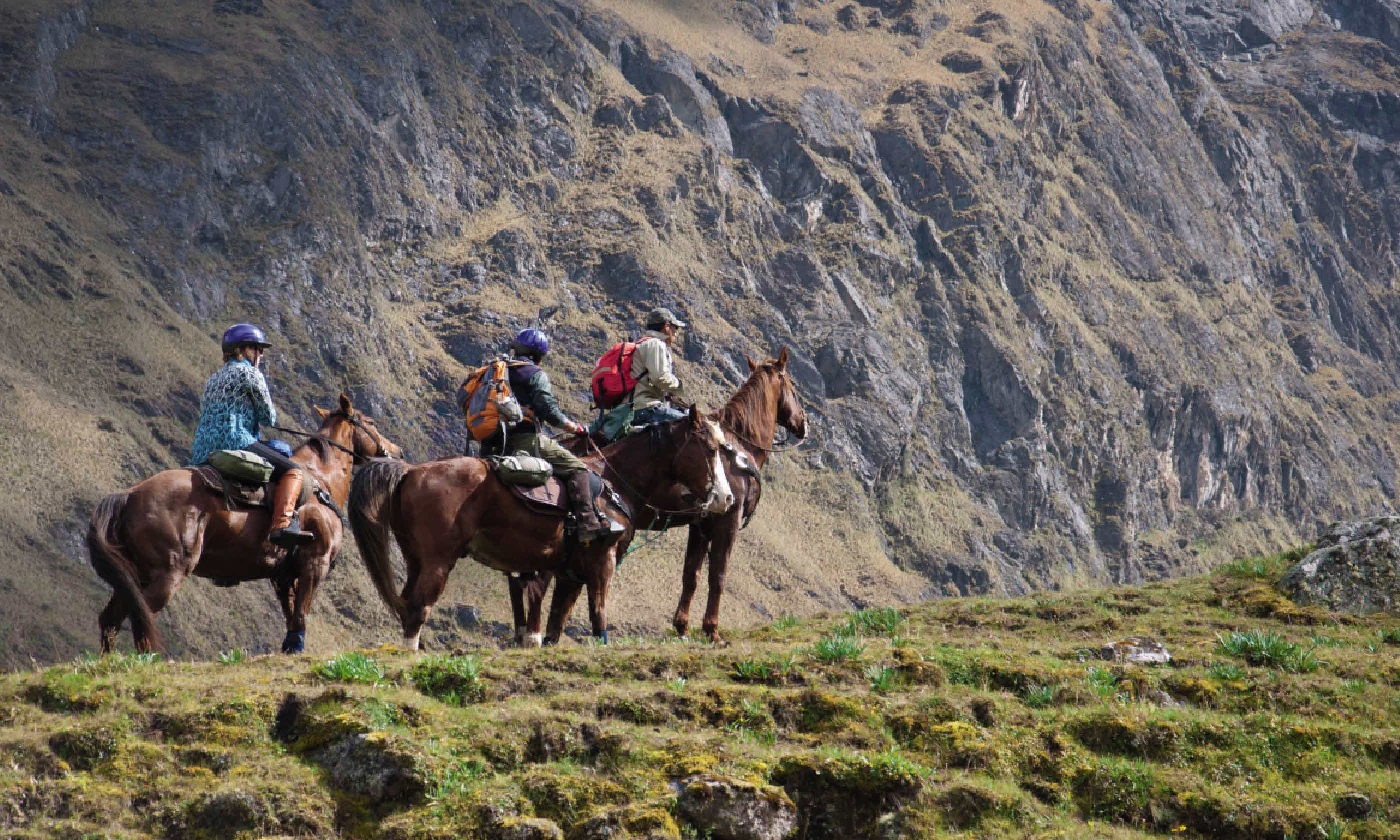
Charming good luck
We were to spend two nights at Soraypampa to give us a chance to acclimatise. I woke to the sound of birdsong and to tassel-eared llamas sauntering past my window. After breakfast, we mounted the horses and went a short distance along the trail before turning off up a hillside, passing cultivated patches and fruit trees, including the banana passionfruit, which is traditionally used in ceviche.
A narrow track led up a mountain, with steep drops to the side. We left the lush vegetation behind, passing giant cacti instead. The path then led out into a valley, where cattle, horses and mules grazed, pairs of Andean geese stood and a condor soared high overhead.
We tied the horses up, and hiked up the mountain to a beautiful glassy-green lake, where caracaras scavenged along the shoreline. In front of us was Humantay, largely obscured by cloud. “When the peak is clear like it is today, but you have clouds below, the locals say that the mountain has its poncho on,” revealed Guido.
We rode back down the way we came. “This is good practise for tomorrow,” said Guido. “Let the horse work out the best route down. Sit back. If it is really steep, you can always grab the back of the saddle with one hand.”
Top of the trail
It was with a huge sense of anticipation that we rode out the next morning. We set off from Soraypampa on an unfinished ‘road’ and then made a short detour over a ridge with a dramatic drop to a deep valley on one side, and a smaller drop on the other. It was one of those glad-to-be-alive, spine-tingling occasions as we took in the grandeur of the scenery.
Next came a steep climb, zigzagging up several switchbacks known as the Seven Serpents. We let the horses pause for a breather whenever they wanted. Two helpers were accompanying us on foot, always staying a little bit ahead, ready to grab a horse or encourage us if needed.
At the top we entered a grassy plateau known as Salkantaypampa where we dismounted to give the horses a proper break. Boulders were strewn around, as if giants had been playing marbles, and viscachas, stumpy rabbit-like rodents, were sunbathing on a rock-covered slope that bordered the pampas.
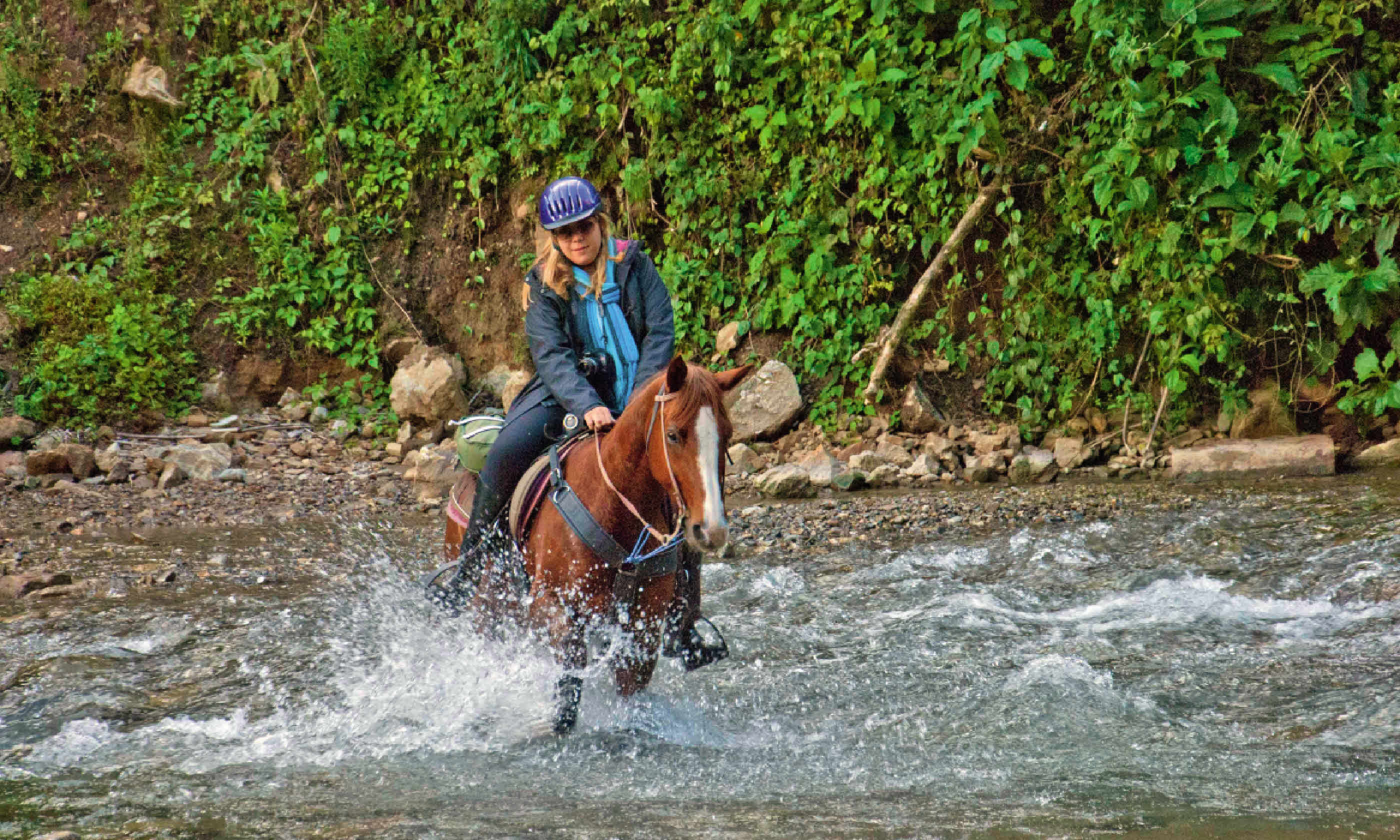
Back in the saddle, it took another 30 minutes to reach the actual pass, at 4,600m. Windswept and bitterly cold, it was dotted with apachetas – cairns made by passing travellers, from Inca times onwards. Our route descended into a different world of thick cloud and muffled sounds. It wasn’t hard to imagine Inca warriors walking along here, or conquistadors riding the same route.
We exited the cloud and, amidst drizzle, arrived at a meadow grazed by cows and striated by mountain streams. Rather surreally, a cook tent and even a loo tent were already set up; a cook, who was to accompany us for the next three nights, was working on a hot three-course lunch.
A short but steep ride brought us down into another large pampa, where sat the brooding shape of Wayra Lodge. Small, with just six rooms, the original plan had been to build it from adobe bricks, but a storm put paid to that idea and stone was used instead – quite a miracle, given its isolated location, miles from any road.
Wayra means wind and, appropriately enough, the wind whistled around outside as dusk fell and candles flickered – it was the perfect setting for ghost stories. We huddled around the log-burning stove as Guido told us how this area is considered haunted by spirits. Spaniards were attacked on the trail, but they wouldn’t be killed outright – that was considered too good for them. Instead they were tied to a boulder, and their guts split open for the condors to come and devour.
The locals don’t venture out at night because of fear of the spirits. “If you see one, you must not speak to it!” said Guido. “If a face appears at the window, it may be a spirit – or it could be a trekker who has lost their way!”
Outside, the sky had cleared. Stars twinkled furiously, the Milky Way clearly visible. Guido pointed out the ‘eyes of the llama’ in the Milky Way, which was known as the Celestial River to the Incas who believed that each star related to an animal.
Guapa goodbyes
The sky was still clear the next morning and, after a last look at Salkantay and Humantay, we set off in bright sunshine. We started to descend down the side of a steep canyon, and within 30 minutes we were riding though vegetation, at first stunted, but then lusher and eventually cloud forest.
As we removed our warm layers, it was hard to believe we had slept with hot-water bottles just hours earlier. Now we pointed out vividly coloured orchids and bromeliads, while butterflies and hummingbirds flitted across our path. After the austerity of the mountains, this was an aromatic and verdant Eden.
We passed through a small settlement where families were going about their everyday chores. Since tourism hit this trail it has brought money, work and young people back into the region. There is no road access here, only the trail, so families operate mule trains to carry luggage for the trekkers and to bring supplies such as beer and bottled water up from the town. Some families have opened small campsites, others have built nice toilets and will charge a small amount for its use. The extra income and mule trains also mean the locals have easier access to products – though there is one commodity that they seem to prize most of all... “Coca leaves are very good for you. It’s a shame the whole world can’t have them!” laughed Guido.
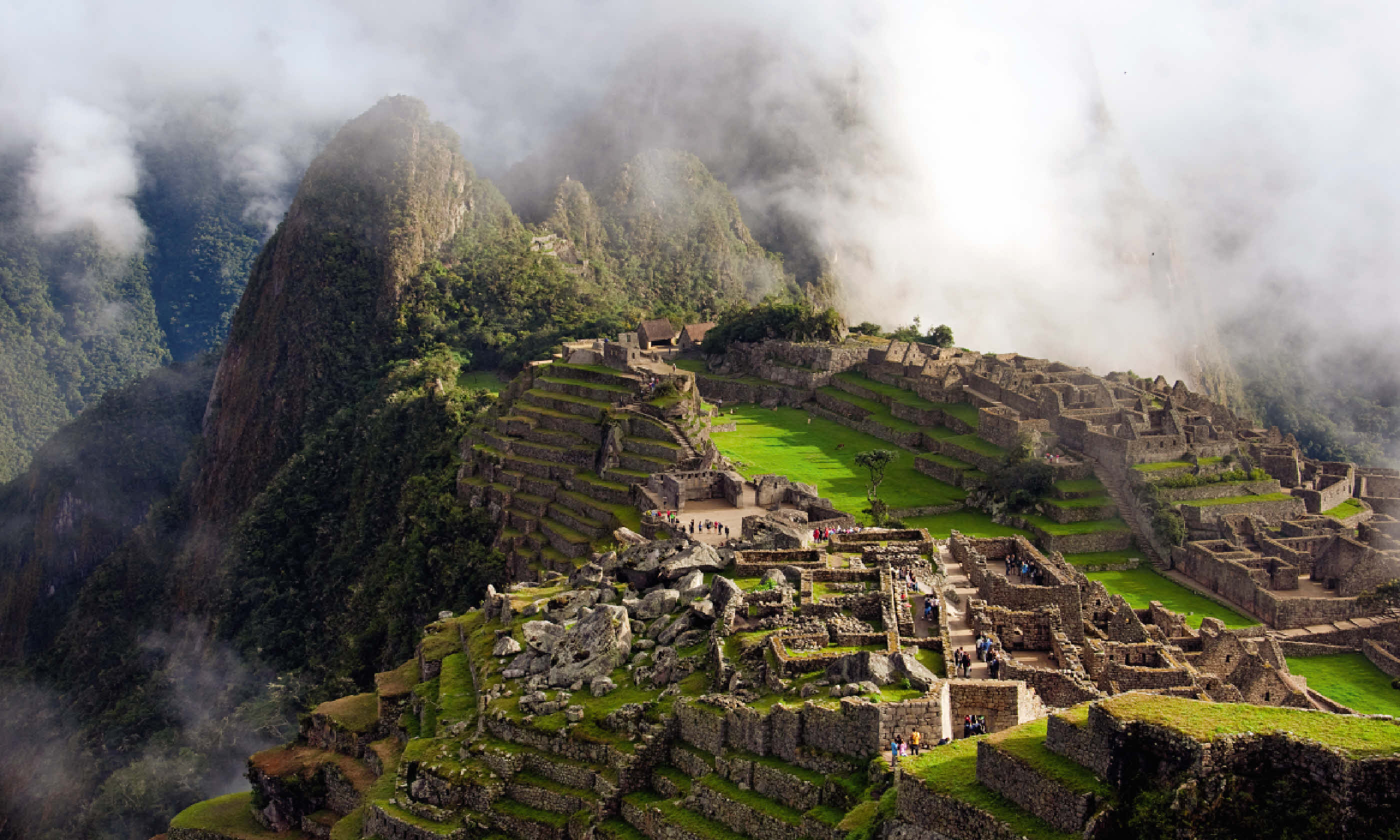
After crossing a river bridge that a couple of the horses were less than keen on, we reached Colpa Lodge. Set on the side of a hill, it overlooks the confluence of three rivers, while the forested hill behind it is home to a wealth of wildlife including spectacled bears. Donkeys grazed on the lawn, and the horses were turned out into an orchard. Meanwhile, a traditional pachamanca meal was being cooked in the garden. Typical Andean vegetables and tubers, as well as various meats, were slow cooked on hot stones within an earth oven.
We were subdued the next morning as it was our last day with the horses. We set off on a relatively new dirt road, but only saw half a dozen cars in the five hours we travelled it. We were following the river through the Santa Teresa Valley, and the sound of rushing water was our soundtrack as we cantered past coffee plantations, tangles of wildflowers and clouds of butterflies – black ones, blue ones and an iridescent one that changed colour from lemon to lilac to sapphire as it flitted around us.
At 1pm we turned off the road and had a final surge up a steep bank into a school playing field where we dismounted. There wasn’t much time for sentimental farewells; the horses, knowing they were about to turn for home, started off across the field on their own, followed in hot pursuit by the helpers. It was a moment of light relief in what would have been a sad parting.
From here, the restored Llactapata Inca Trail leads in the direction of Machu Picchu, but horses are not allowed on it. The next morning we could take a minibus to the train station... or do it the Inca way, walking first for three hours along the trail to Llactapata, an Inca site that looks across to Machu Picchu.
The site was found by Hiram Bingham on his follow-up expedition to Machu Picchu, although he barely explored it. Llactapata is far more extensive and important than originally thought. On the summer solstice the sun shines directly down a stone corridor; one theory is that if the Inca hung a gold sheet there, it would have reflected the sun back onto Machu Picchu.
A long, steep and tough descent took us down to the train station and to Aguas Calientes, aka Machu Picchu Pueblo. It was a culture shock to be among fellow travellers again after so many days by ourselves, and to dine in a packed restaurant instead of with only each other.
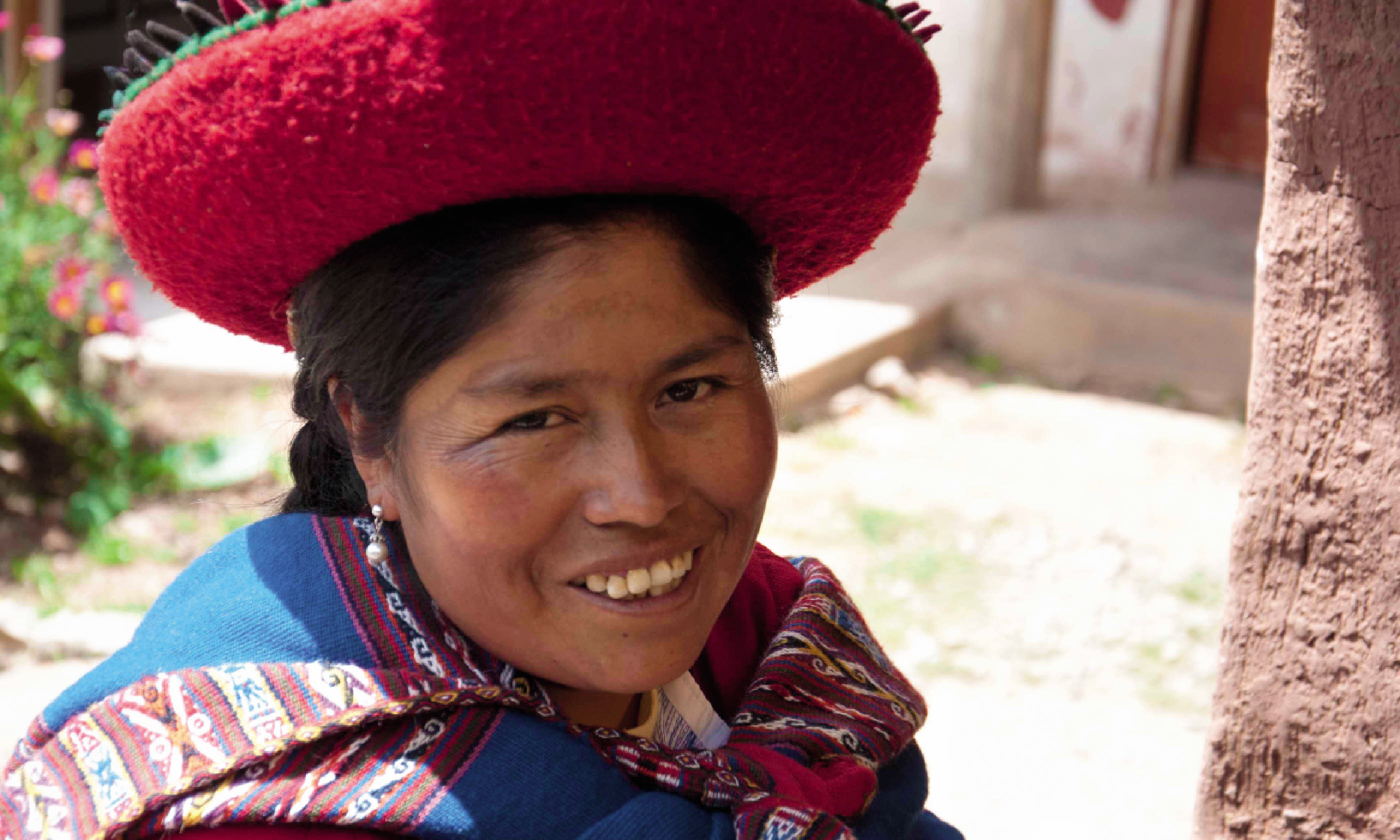
Trail ends
We woke early, but not as early as some. Guido had correctly predicted there was little point getting to Machu Picchu for sunrise as it would be cloudy. Sure enough, when we arrived it was completely shrouded, hiding its secrets from us. But the sun gradually broke through, the mists shimmying to give tantalising glimpses. Finally, the full splendour and scale of the citadel was exposed. We marvelled at the skill and ingenuity, the craftmanship and the mysteries.
While entranced by the site, I couldn’t help but remember Guido’s constant reminders throughout our journey that you shouldn’t consider Machu Picchu in isolation. It was part of a whole network of sites, both manmade and natural. In the Inca world everything was interconnected and in alignment. You had to read the landscape, just as the Inca had.
I kept looking out at the surrounding mountains. “Which way is Mount Salkantay?” I asked Guido. He pointed exactly due south, but the view was obscured by heavy cloud. It struck me that Guapa would probably be heading over the Salkantay pass right now on her way back home –following in the steps of countless Inca from long ago.





